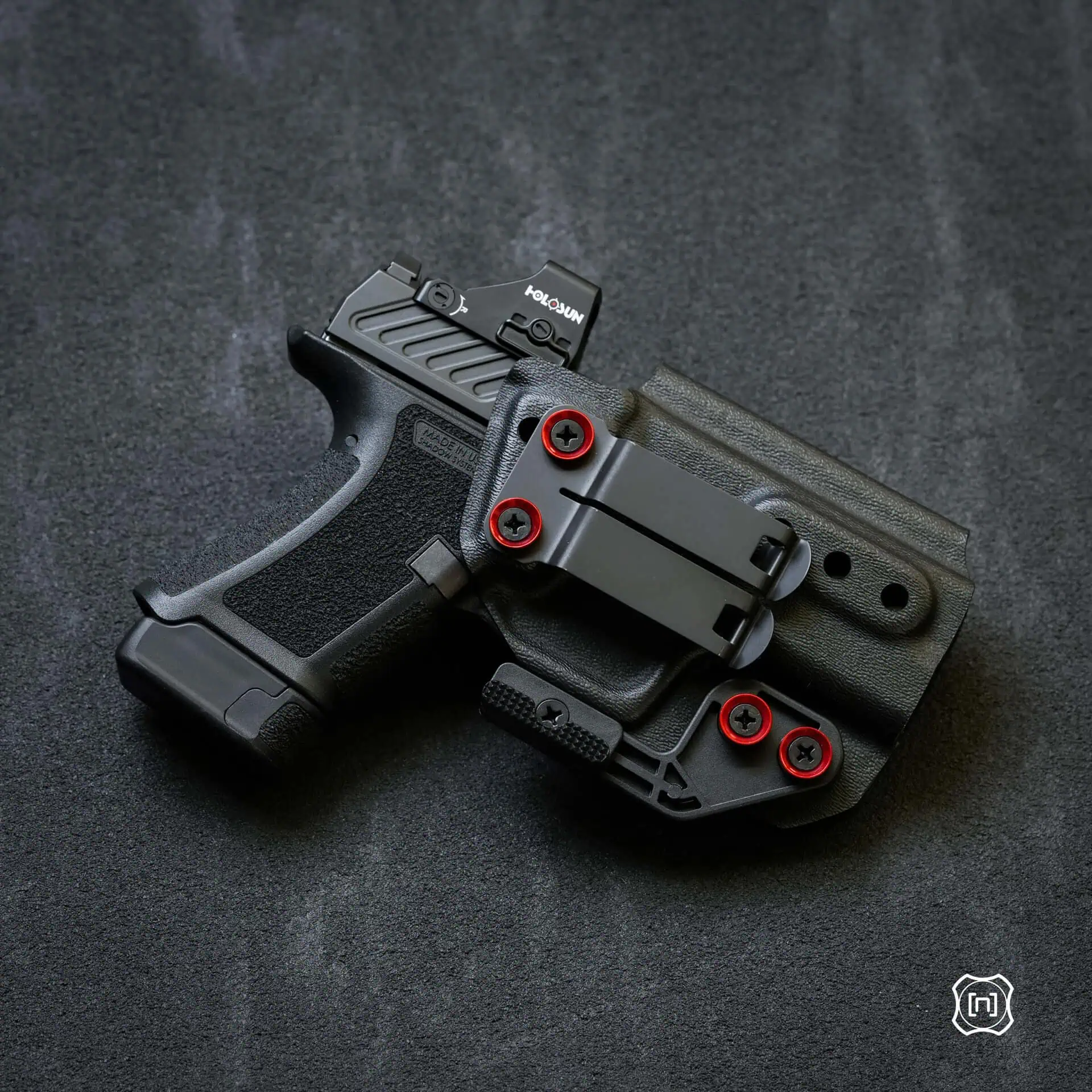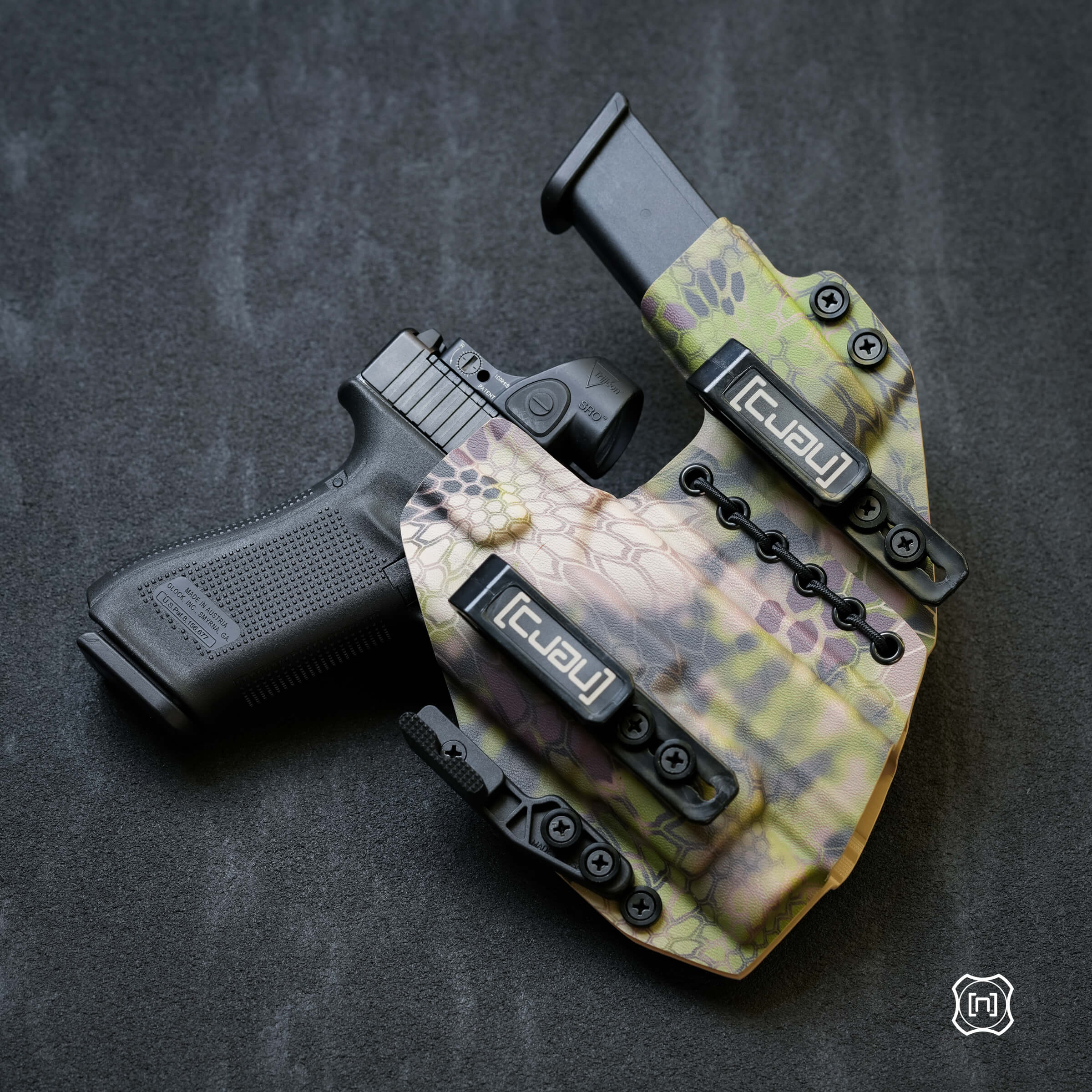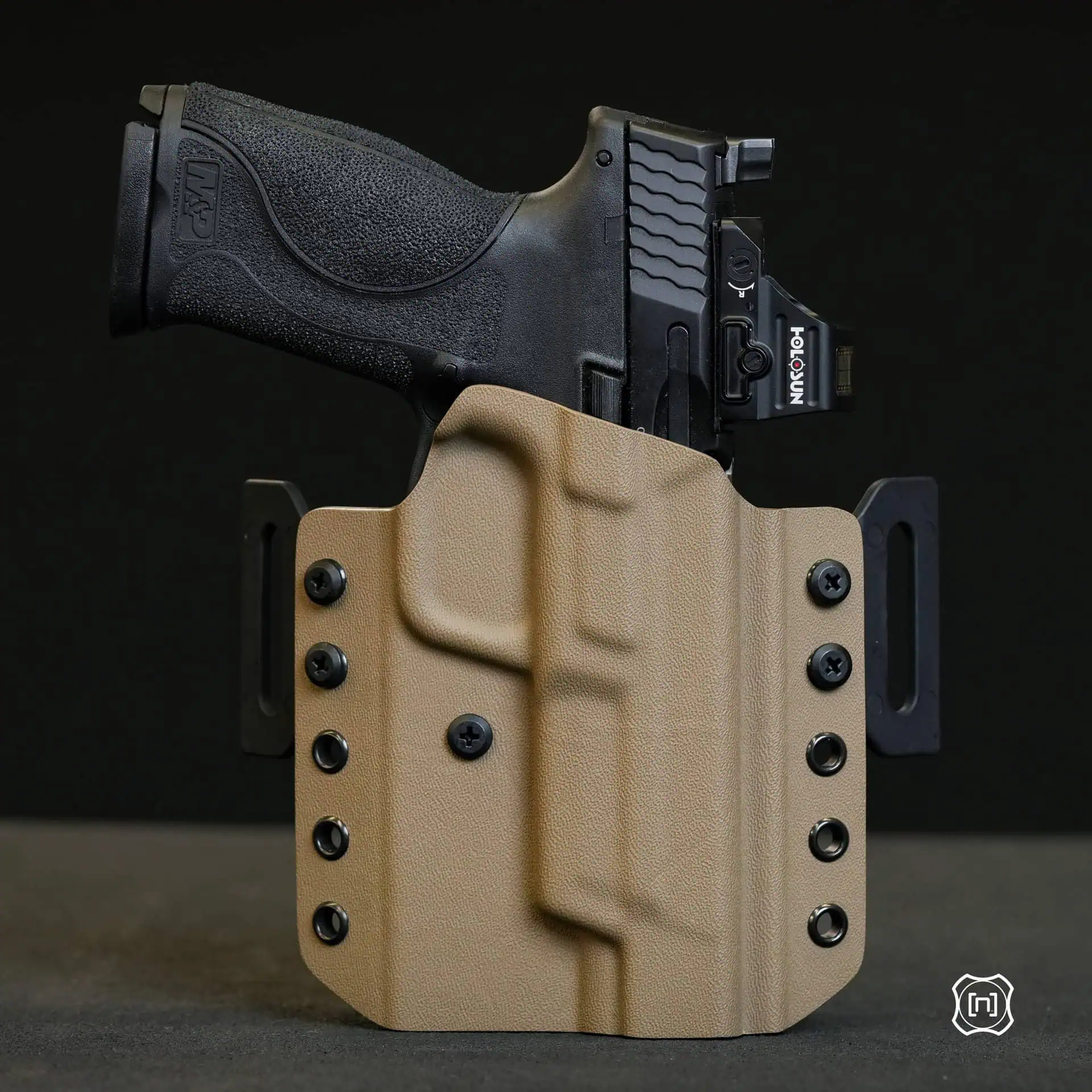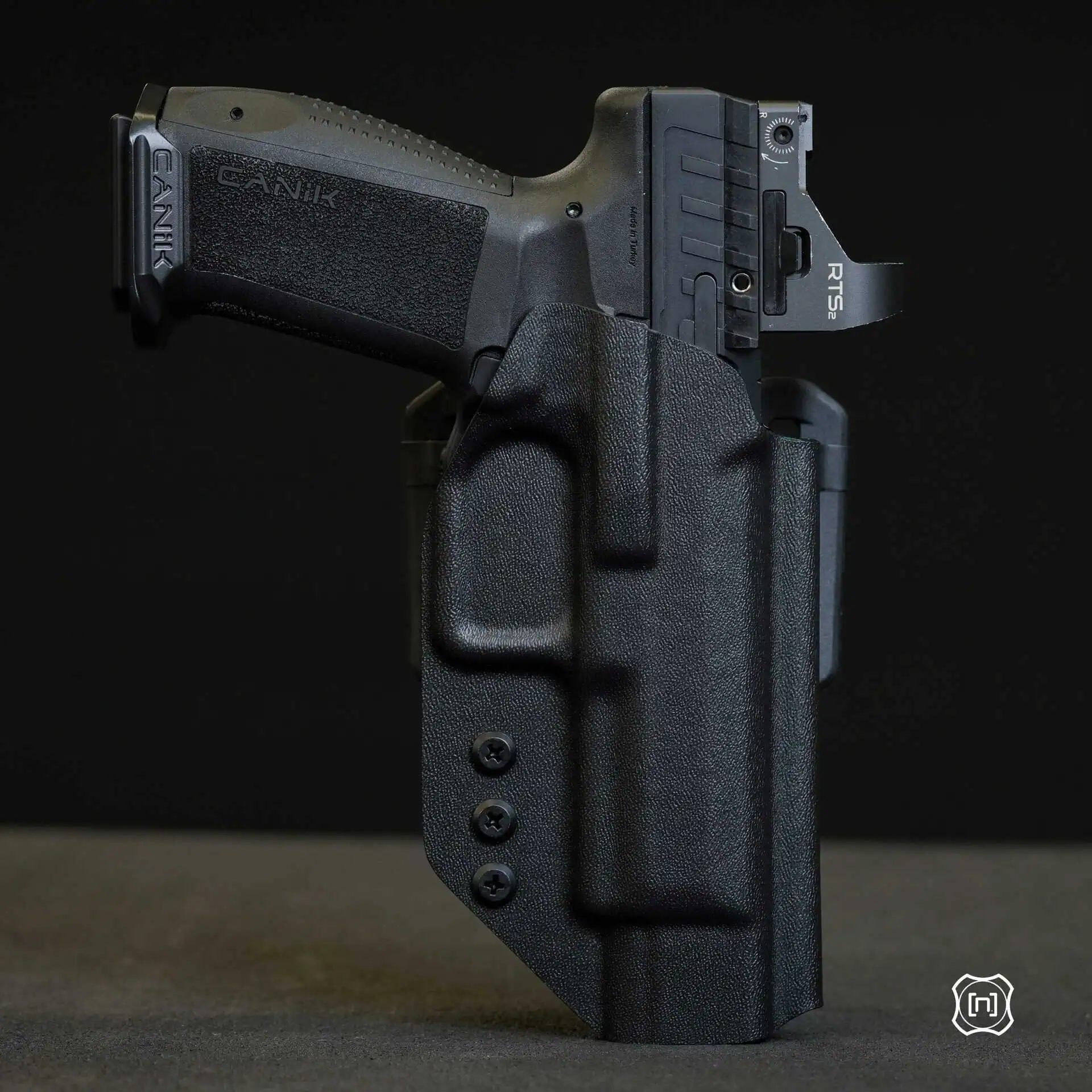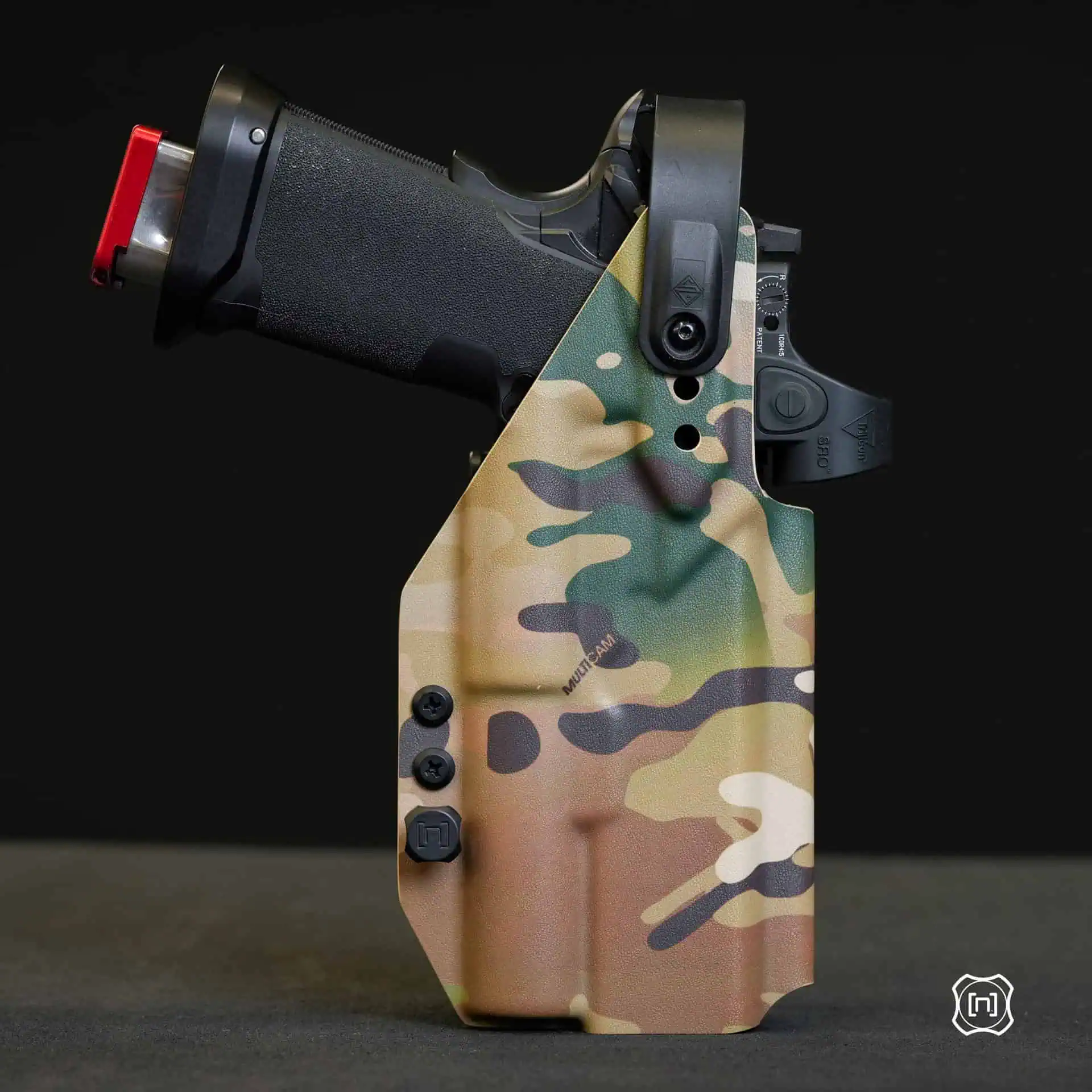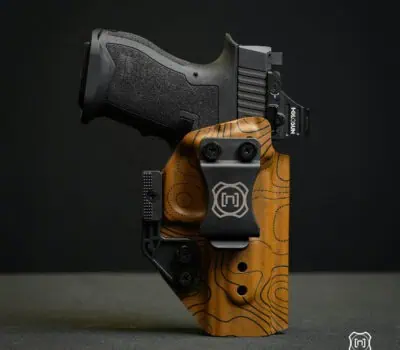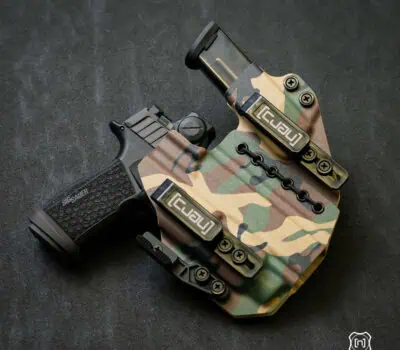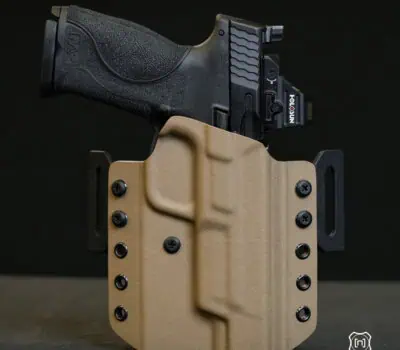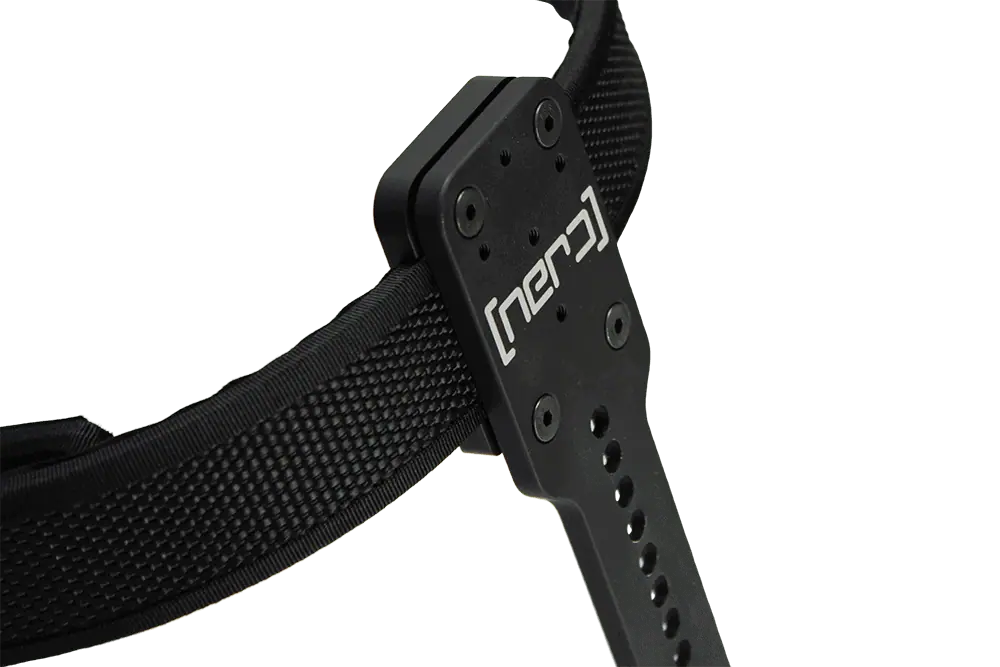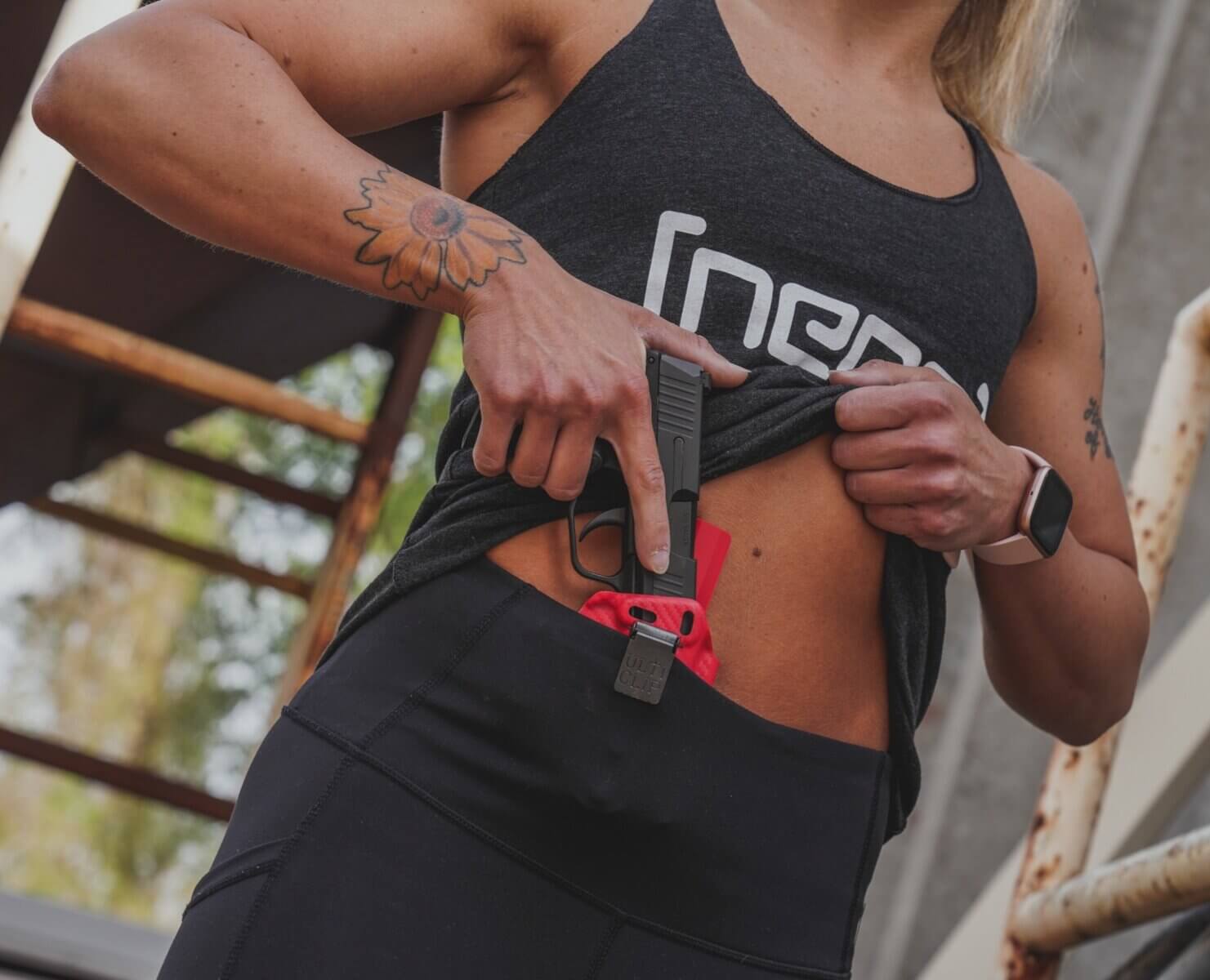Weapon mounted lights (WML) are becoming more common on pistols for self-defense and competition, so it’s more important than ever to understand how this impacts your holster choices.
Differences in holster fit and retention
The main difference between a light bearing holster and a non-light bearing holster is how they retain the gun. Non light bearing holsters typically fit around the trigger guard of the pistol, this provides a secure, repeatable location for the holster to place tension on the gun. This results in an audible and tactile click, letting you know the gun is securely holstered.
It’s not quite as simple with a holster designed to accept a weapon light though. Because weapon lights usually mount to pistols in front of the trigger guard, the holster must have an open channel for the light. That means the retention mechanism changes from a nice click around the trigger guard, to friction between the weapon light and holster itself.
Safety and security with WMLs.
Different lights from Surefire, Streamlight, OLight, and other brands require different molds to ensure a safe, and secure fit. Sometimes even variations of models, like the Streamlight TLR-1 HL and TLR-1 HLX aren’t quite the same, and require a different holster. This is critical for proper retention and safety.
Another hazard to watch out for with WMLs is access to the trigger guard. Most of the time, the light is wider than the trigger guard. This means that an improperly molded holster can quickly be a safety issue, since fingers, debris, and whatever else can work it’s way into the trigger guard of a holstered pistol, and you may find yourself with some extra ventilation in your pants, or worse.
At [NERD], we use CNC cut, aluminum pistol molds to ensure correct, and consistent fit for each and every model. Each mold is a big investment, but we accept no less than perfection for our customers. So whether you have a Surefire, Streamlight, Holosun, OLight weapon light, chances are, we’ve got you covered.

